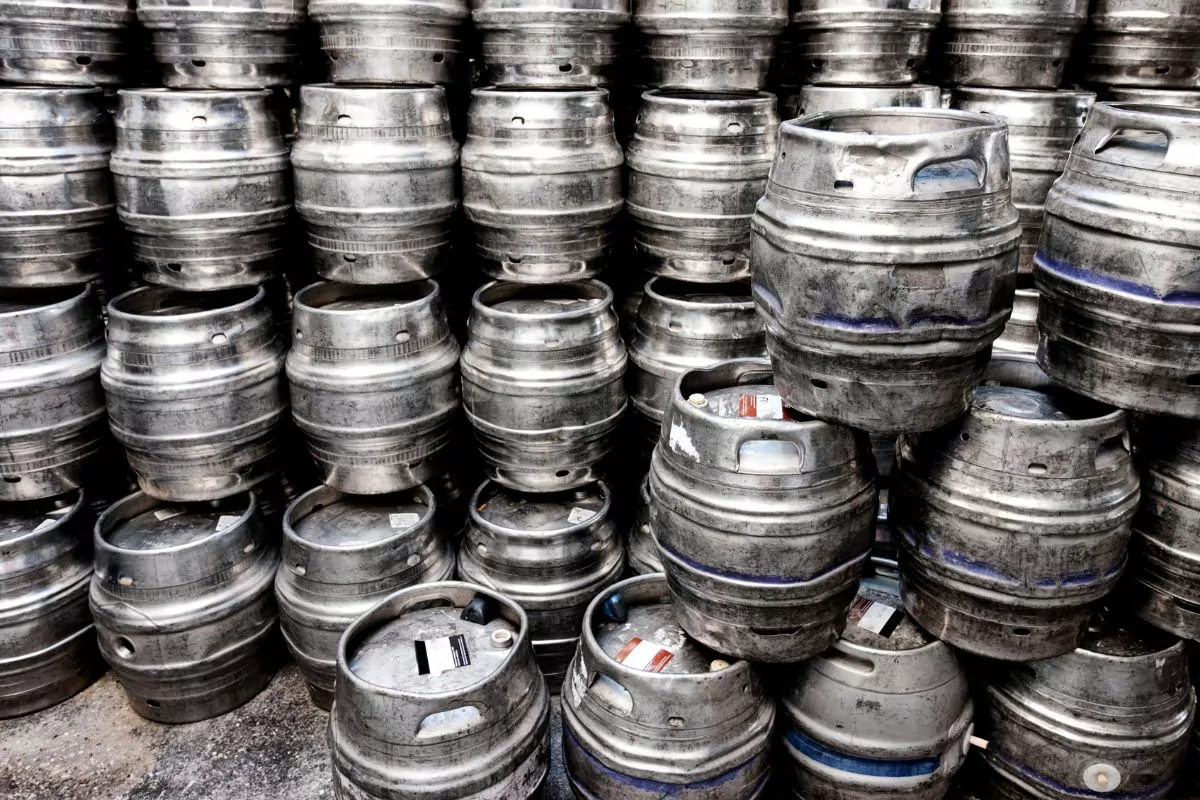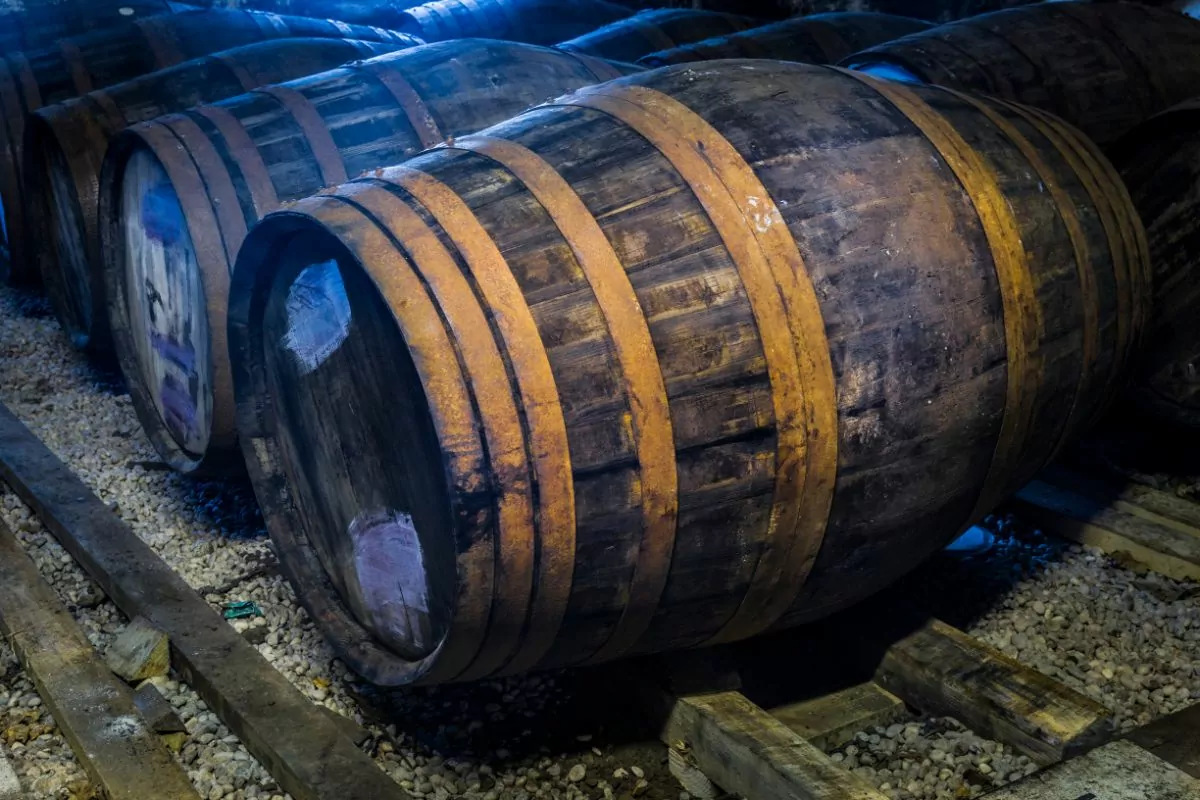There is no denying that beer poured from a keg tastes a lot better than beer drunk from a can or a bottle. This is the way in which most lagers, beers, pilsners, etc. are designed to be enjoyed.
So, if you want to get maximum enjoyment from your beer, you should pour it from a keg where possible.

There was a time when it was only bars, clubs, and restaurants that had to consider how long a keg of beer lasts.
However, with the increasing popularity of home bars, more and more people are installing kegerators and the lines (see also: How To Clean A Kegerator Line)that allow you to enjoy alcoholic beverages in this fashion in their homes.
If you are considering purchasing a keg of beer, then one of the most important things you will want to know is how long it will last.
Ultimately, how long your keg lasts will depend on the type of alcohol stored inside it, how much of that drink you plan on consuming, and whether, or not, the keg is tapped or sealed.
In this guide, we’re taking a look at all you need to know about how long a keg lasts. Read on to find out more!
How Long Does A Keg Stay Fresh Once Tapped?
First things first, let’s take a look at how long a keg will stay fresh once it is tapped. When a keg is tapped, this essentially means that the tap has been opened in order for the keg to be attached to the lines.
So, how long will a keg stay fresh once the tap has been opened?
With any keg, how long it will stay fresh will depend on the type of alcohol stored within the keg. Some types of alcohol, such as cider, will have long shelf lives.
While other types of beer, such as lagers, will have shorter shelf lives. Regardless of the shelf life of the beer, it will start to reduce once the keg is tapped.
The general rule of thumb is that unpasteurized beers will stay fresh and drinkable for around 45 to 60 days once tapped, while pasteurized draft beers will stay fresh for significantly longer.
Generally, pasteurized draft beers will be safe to drink for around 90 to 120 days.
If you work in hospitality and are researching this information for that purpose, then you will generally use a full keg (see also: How Much Does A Full Keg Weigh?)way before the keg goes bad.
But if you are researching for a home bar, it is very important to keep this information in mind.
How Long Does A Keg Stay Fresh When Sealed?
As you will expect, a sealed keg will have a much longer shelf life than a tapped keg. Sealed kegs aren’t exposed to the elements in the same way as tapped kegs.
So, when they are stored in the correct environment, your sealed kegs will be safe to drink for considerably longer.
Again, the shelf life of the sealed keg will ultimately depend on what is stored within it, so unpasteurized beers will have a shorter shelf life than pasteurized beers.
Generally, sealed kegs of pasteurized beers will stay fresh for around 3–6 months. While sealed kegs of unpasteurized beers will be fresh for around 2 months.
In order for your sealed kegs to stay fresh, they will need to be stored in the correct environment. So, let’s take a look at what happens if they are stored incorrectly.

Does Beer Go Bad In A Keg?
If your kegs of beer aren’t stored in the correct environment, then the beer will go bad. This goes for tapped and sealed kegs of beer.
The main thing that your keg of beer will need in order to stay fresh is a steady temperature of 38 degrees Fahrenheit. The temperature generally shouldn’t be any lower or higher than this, however, if need be, lower is better.
Kegs that are stored above 38 degrees Fahrenheit will quickly become damaged. Within the keg, the beer will start to foam excessively, and this foaming will become worse as the temperature gets higher.
As the beer foams, it will become stale and undrinkable, that is why maintaining a cool temperature is essential.
The importance of temperature control when it comes to beer is the main reason why most establishments store their kegs in cellars underground.
This makes keeping the beer at a cool temperature much easier, and will help extend the shelf life of your beer.
Summary
In short, how long a keg of alcohol lasts will ultimately depend on a number of factors.
These factors include the type of alcohol stored within the keg (i.e., beer, pilsner, lager, cider, etc.), the amount of alcohol you plan on drinking over a set period, and most importantly, whether the keg is sealed or tapped.
Sealed kegs will last for significantly longer than kegs that are tapped. Once tapped, the shelf life of the keg decreases significantly, especially for certain types of alcohol.
So bear this in mind when you connect your keg to the lines.
We hope this information has been helpful. Thank you for reading!
Frequently Asked Questions
When a keg is “tapped”, this essentially means that the keg has been opened. At the top of the keg is a component called the “tap”, and it is via this tap that the lines are connected to the keg.
As soon as you open the tap, the seal is broken and the keg is opened. You will generally only do this when connecting your keg to the lines.
While most kegs will have a decent shelf life, they can go bad. Especially once they have been tapped. It is really easy to tell if a keg has gone bad as the beer will produce a really sour taste.
Simply put, you will be able to tell if a keg is bad if the alcohol coming out of it tastes like it has turned.
- StockHouseBrewing.com is being acquired by MomentumBrewHouse.com - October 24, 2023
- MomentumBrewHouse.com Acquires EmpiricalBrewery.com - August 31, 2023
- How Many Calories Are In A Bottle Of Beer? - May 24, 2023
